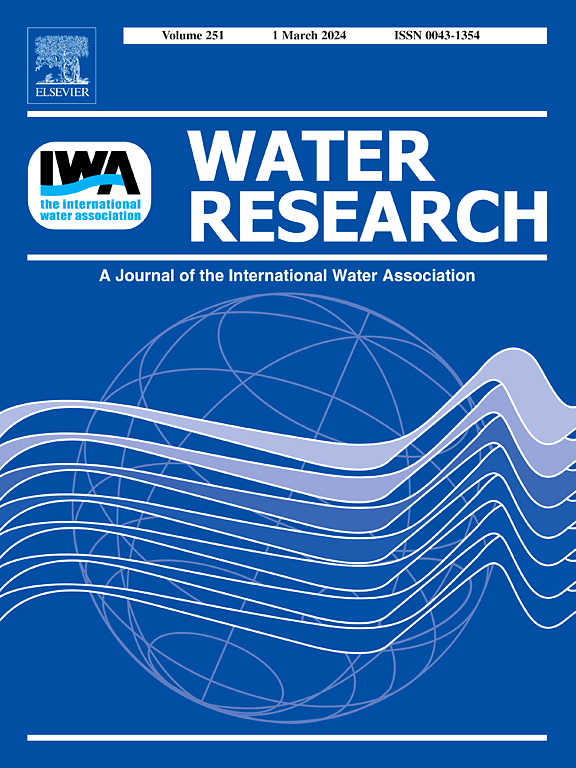吐露港有害藻华对环境变化的长期演替动态及响应策略
IF 11.4
1区 环境科学与生态学
Q1 ENGINEERING, ENVIRONMENTAL
引用次数: 0
摘要
有害藻华(HABs)的产生和演代更多地归因于营养物质浓度过高和营养化学计量失衡,而不是由于缺乏长期监测数据等其他环境驱动因素。利用近40年的数据,分析了1986 - 2023年吐露港赤潮的演替模式和主要驱动因素。有效的政府措施显著改善了水质,溶解无机氮(DIN)、溶解无机磷(DIP)、5天生化需氧量(BOD5)和大肠杆菌(E. coli)浓度分别下降了53%、80%、45%和59%。年赤潮事件由28次减少到3次,物种多样性由6次减少到2次。然而,有毒物种的出现频率从21%上升到46%。甲藻作为优势初始物种出现,次级优势从硅藻转向绿藻,毒素类型从腹泻性贝类中毒(DSP)转向溶血性毒素(HT)。这些变化可能是人类和自然共同影响的结果。模型模拟证实,赤潮暴发、物种演替和毒素类型的变化是由pH值下降、温度上升、氮磷比失衡、有机养分增加和藻类拮抗作用驱动的。该研究强调了DIN和DIP以及无机和有机营养物质双重减少的重要性,表明过度关注或分散对一种营养物质(例如DIP或DON)的关注可能导致意想不到的生态后果,如稀有和有毒物种的扩散。我们强调了气候变化(变暖和海洋酸化)和人为活动(营养物污染和富营养化)对有害藻华的综合影响,特别是数量和毒素的产生。本研究将政策变化与赤潮藻华动态联系起来,为管理赤潮提供战略建议,并为可比海湾生态系统中营养减少的影响提供新的视角。本文章由计算机程序翻译,如有差异,请以英文原文为准。


Long-term successional dynamics and response strategies of harmful algal blooms to environmental changes in Tolo Harbour
The production and succession of harmful algae blooms (HABs) are attributed more to excessive nutrient concentrations and unbalanced nutrient stoichiometry than to other environmental drivers as the absence of long-term monitoring data. This study analyzed HABs succession patterns and key drivers in Tolo Harbour from 1986 to 2023, leveraging nearly 40 years of data. Effective governmental measures significantly improved water quality, with dissolved inorganic nitrogen (DIN), dissolved inorganic phosphorus (DIP), 5-day biochemical oxygen demand (BOD5), and Escherichia coli (E. coli) concentrations decreasing by 53 %, 80 %, 45 %, and 59 %, respectively. Annual HABs events dropped from 28 to 3, and species diversity declined from 6 to 2. However, toxic species frequency rose from 21 % to 46 %. Dinoflagellates emerged as dominant initial species, with a shift in secondary dominance from diatoms to ochrophytes and toxin types from diarrhetic shellfish poisoning (DSP) to hemolytic toxins (HT). These shifts likely result from combined human and natural influences. Model simulations confirmed that red tide outbreaks, species succession, and shifts in toxin types were driven by declining pH, rising temperatures, unbalanced nitrogen-phosphorus ratios, organic nutrient increases, and algal antagonism. The study emphasizes the importance of the dual reduction of both DIN and DIP, meanwhile inorganic and organic nutrients, suggesting that overly focusing on or distract from one nutrient (e.g., DIP or DON) could lead to unintended ecological consequences, like the proliferation of rare and toxic species. We highlight the combined impacts of climate change (warming and ocean acidification) and anthropogenic activities (nutrient pollution and eutrophication) on HABs, particularly the number and toxin production. This research links policy changes to HABs dynamics, offering strategic recommendations for managing red tides and contribute novel perspectives on the impact of nutrient reduction in comparable bay ecosystems.
求助全文
通过发布文献求助,成功后即可免费获取论文全文。
去求助
来源期刊

Water Research
环境科学-工程:环境
CiteScore
20.80
自引率
9.40%
发文量
1307
审稿时长
38 days
期刊介绍:
Water Research, along with its open access companion journal Water Research X, serves as a platform for publishing original research papers covering various aspects of the science and technology related to the anthropogenic water cycle, water quality, and its management worldwide. The audience targeted by the journal comprises biologists, chemical engineers, chemists, civil engineers, environmental engineers, limnologists, and microbiologists. The scope of the journal include:
•Treatment processes for water and wastewaters (municipal, agricultural, industrial, and on-site treatment), including resource recovery and residuals management;
•Urban hydrology including sewer systems, stormwater management, and green infrastructure;
•Drinking water treatment and distribution;
•Potable and non-potable water reuse;
•Sanitation, public health, and risk assessment;
•Anaerobic digestion, solid and hazardous waste management, including source characterization and the effects and control of leachates and gaseous emissions;
•Contaminants (chemical, microbial, anthropogenic particles such as nanoparticles or microplastics) and related water quality sensing, monitoring, fate, and assessment;
•Anthropogenic impacts on inland, tidal, coastal and urban waters, focusing on surface and ground waters, and point and non-point sources of pollution;
•Environmental restoration, linked to surface water, groundwater and groundwater remediation;
•Analysis of the interfaces between sediments and water, and between water and atmosphere, focusing specifically on anthropogenic impacts;
•Mathematical modelling, systems analysis, machine learning, and beneficial use of big data related to the anthropogenic water cycle;
•Socio-economic, policy, and regulations studies.
 求助内容:
求助内容: 应助结果提醒方式:
应助结果提醒方式:


